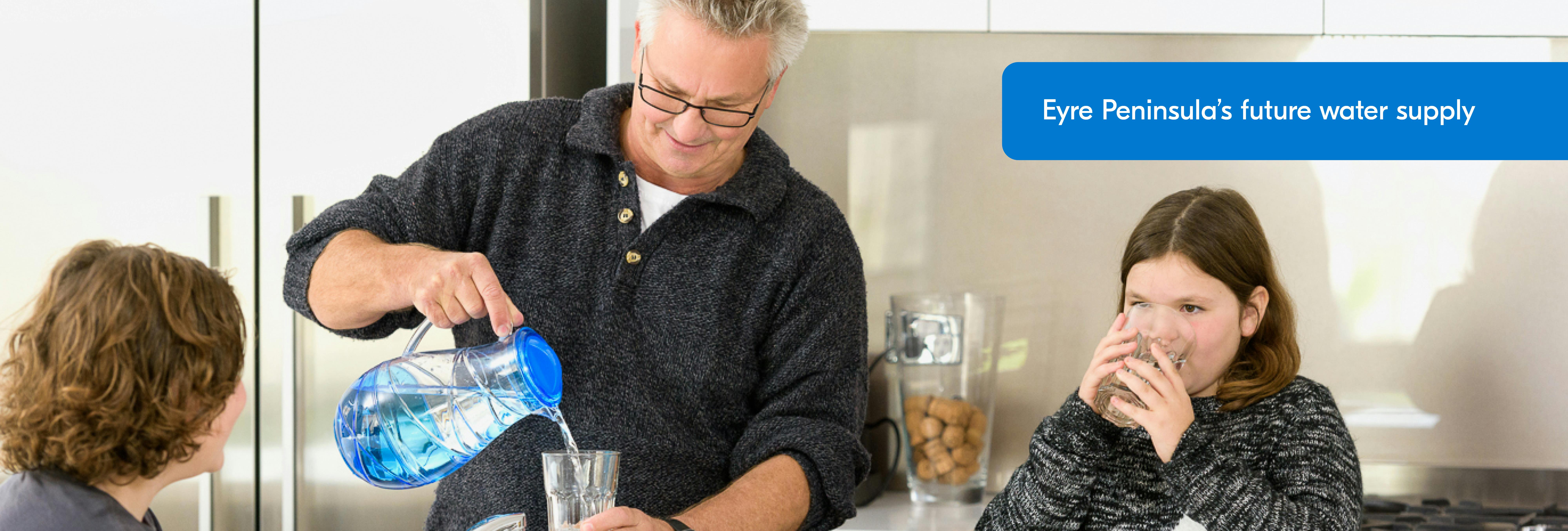Project information
Billy Lights Point is our preferred location
Our proposed site at Billy Lights Point is:
- close to existing water and electricity networks, requiring a short, 4 km powerline route and a 7.4 km transfer main to North Side Hill storage tanks
- formerly industrial and not located near residential properties, which will help to minimise visual and environmental impact on the landscape
- relatively sheltered with a mostly flat landscape, helping to reduce construction risks and challenges, delivering the best value option for our customers.
A number of alternative locations have been assessed and investigated for the Eyre Peninsula desalination plant, however, these presented challenges including:
- nationally and state protected flora and fauna
- internationally and nationally protected species such as migratory whales
- location within or adjacent to a State Marine Park
- unique geology
- high cliffs and exposed coastline requiring significant engineering design and complex construction processes, resulting in an additional $150 million cost impost on customers.
Billy Lights Point is our preferred location because it offers the quickest solution to ensuring long-term water security for the region, with the least impact on future water costs for customers. Marine science research undertaken to date indicates that with the right engineering design, a desalination plant at Billy Lights Point can be built with minimal impact on the marine and coastal environments.
 Concept design image for the Eyre Peninsula desalination plant. Final design to be confirmed.
Concept design image for the Eyre Peninsula desalination plant. Final design to be confirmed.First water expected mid-2026
By mid-2026, a desalination plant at Billy Lights Point would produce 0.016 gigalitres or 16 megalitres of fresh, clean drinking water per day – with the capacity to be expanded to around 0.024 gigalitres or 24 megalitres per day.
Further scientific investigations and assessments will inform the detailed design of the plant, including the location of the intake (where the plant draws in seawater) and outfall (where the plant disperses saline concentrate from the desalination process) pipes.
The data from these investigations and assessments, along with community input, informed our development application for the project, which was lodged with the State Planning Commission in June 2024. Our application is being assessed by multiple agencies and regulators through a comprehensive approval process, which provided for further community consultation.

How desalination works
- Pre-treatment - seawater is pumped through intake screens and filters to remove particles, before passing through an ultrafiltration membrane.
- Reverse osmosis - semi-permeable membranes allow water molecules to pass through but block larger salt molecules, resulting in the removal of impurities and salt in the water.
- Post-treatment - the desalinated water is disinfected and re-mineralised to increase alkalinity to reduce the potential for corrosion in the network and customers’ plumbing. Treated water meets the Australian Drinking Water Guidelines, ensuring it is safe to drink.
- Storage - the clean drinking water is then stored and supplied to homes and businesses.
-
Outfall - the remaining concentrated seawater is returned to the ocean through the outfall pipe and diffusers to ensure it reaches the natural salinity levels of the environment.

After desalination, clean, fresh water from the desalination plant would be pumped to the North Side Hill storage tanks near Port Lincoln. The water would then be distributed through our network to ensure it reaches regional and remote communities across the Eyre Peninsula, for use in homes, schools, hospitals, businesses, and agriculture.



